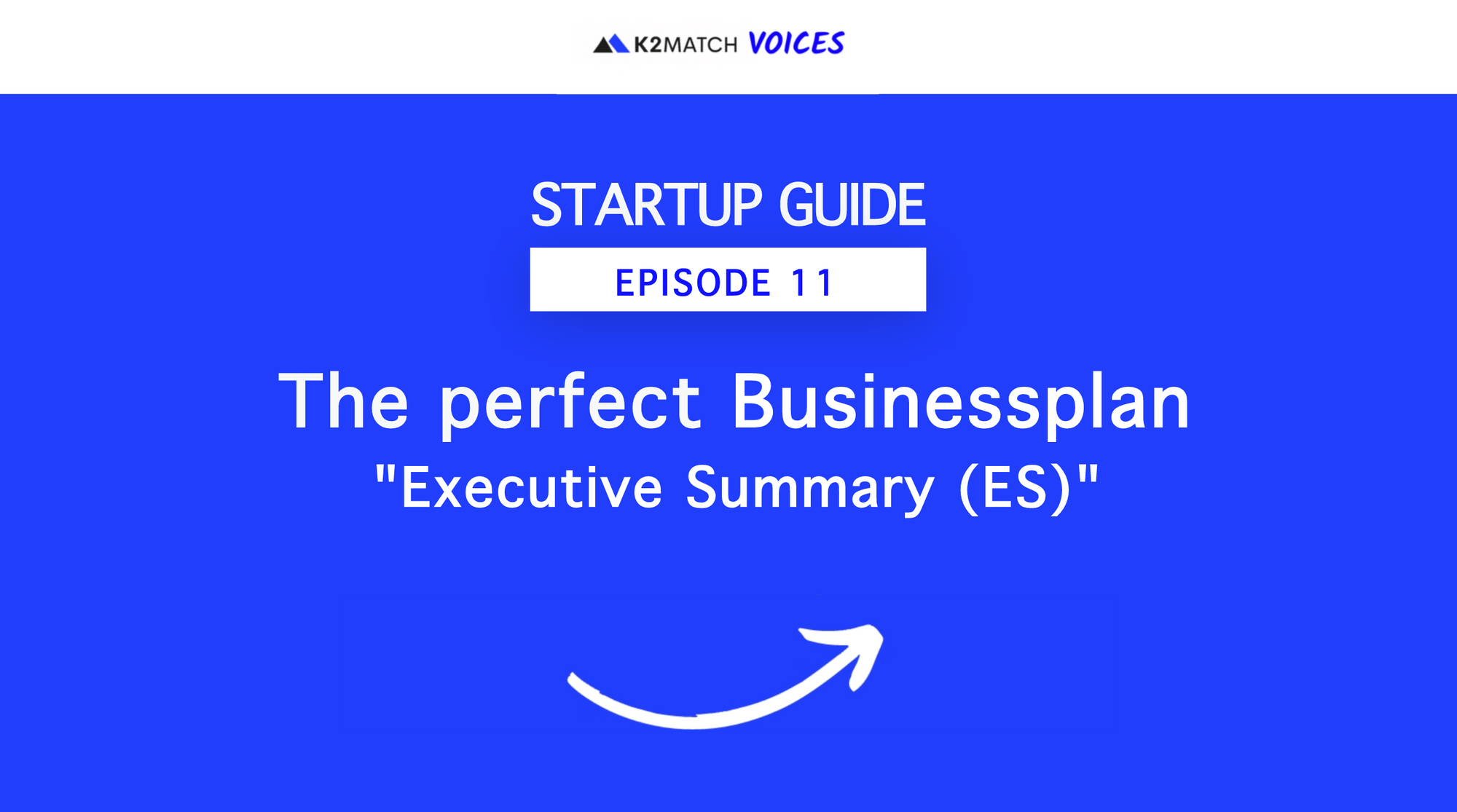Executive Summary (ES)

Executive Summary (ES)
The quality of the ES often determines whether the actual business plan is read at all. Therefore, pay special attention to the ES. Everything essentials should be mentioned in the ES, especially your unique selling proposition (USP) and value proposition (VP) should be clearly emphasized.
And yet, brevity is the spice of life, because the ES should only be 1.5 to 2 pages.
To the point
The Executive Summary addresses all the key data that will later be explained in detail in the main chapters and sections. It therefore provides condensed information about your product and / or service, about the customer benefits, relevant markets, the competence of the management, the investment requirements, the possible return on investment and the desired legal form.
Briefly describe your business goals and visions with a clear with a recognizable strategic focus. Always concentrate on the core idea.
Executive summary at the very end
The executive summary is a separate component of the business plan and summarizes all the important data of your concept. It is therefore not to be confused with an introduction or the short description of your business idea. Therefore, write the Executive Summary only after all other components of the business plan have been completed. This will give you the necessary overview to formulate ideas and goals concisely, precisely and comprehensibly.
Putting it to the test
Generally, the ES is read by investors right at the beginning. It alone will not persuade financiers to fund a project, but a clear and comprehensible description of your project, which can be easily understood by technical laymen, shows that you understand your business and can inspire others.
The executive summary should be read and understood in a short time. Useful are subheadings for a reader-friendly structure. Put it to the test and present the Executive Summary to people who are not familiar with your business idea or who do not have your technical or scientific background.
This is how you test your future persuasiveness. No potential investor is also a specialist in your scientific or technical profession. By the way, this applies to the entire business plan.
Questions to be answered in the Executive Summary:
Product/service (max. ¼ page)
What problem have you identified with your potential customers? How do you solve it? Present your product/service briefly and concisely. What is the customer benefit? How do you justify your knowledge and technology advantage? What is the state of development?
Business model and founding team (max. ½ page)
What does your business model look like? What does your business/company structure look like? Highlight the technical, commercial, and operational skills and experience of your founding team. What other personnel do you plan to start with? Where are you today? What goals do you want to achieve in the short to medium term?
Market and competition (max. ¼ page)
Why is the market attractive? What are the important characteristics of your industry? Who are your target customers and what distinguishes them? Who are the main competitors? What are the barriers to entry?
Marketing and sales (max. ¼ page)
With which prices do you want to go to market? What is your sales strategy/concept? Which communication measures will you use? What is your market entry strategy?
Opportunities and risks of your project (max. ¼ page)
Show which opportunities and which risks you see with regard your start-up project.
Finances (max. ½ page)
Show the projected sales development for the next three years. When will your project be profitable? How high will the capital requirements be for your start-up? Where will the funds come from (equity capital, outside capital)?
The Article was provided by K2MATCH and inspired bei NUK

